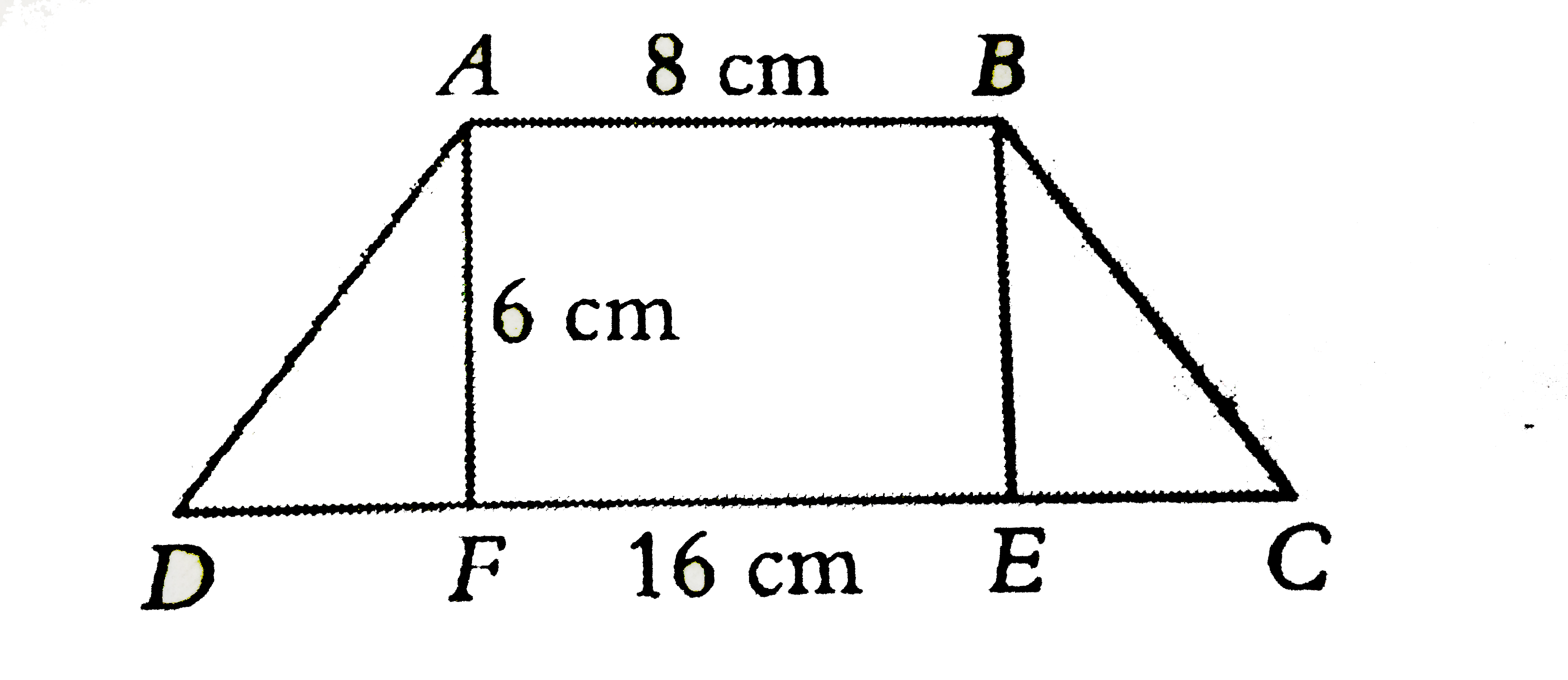The side of a square metal sheet is 12 m. Four squares each of side 3 m are cut and removed from the four corners of the sheet and the remaining part is folded to form a cuboid (without top face). Find the volume of the cuboid so formed.
108 m3
36 m3
118 m3
54 m3
The correct Answer is:A
Step by step video, text & image solution for The side of a square metal sheet is 12 m. Four squares each of side 3 m are cut and removed from the four corners of the sheet and the remaining part is folded to form a cuboid (without top face). Find the volume of the cuboid so formed. by Maths experts to help you in doubts & scoring excellent marks in Class 7 exams.
Updated on:21/07/2023Topper's Solved these Questions
- MENSURATIONBOOK - PEARSON IIT JEE FOUNDATIONCHAPTER - MENSURATIONEXERCISE - CONCEPT APPLICATION (LEVEL 3)
50 Videos
- MENSURATIONBOOK - PEARSON IIT JEE FOUNDATIONCHAPTER - MENSURATIONEXERCISE - ASSESSMENT TESTS
24 Videos
- MENSURATIONBOOK - PEARSON IIT JEE FOUNDATIONCHAPTER - MENSURATIONEXERCISE - ESSAY TYPE QUESTIONS
23 Videos
- INDICES BOOK - PEARSON IIT JEE FOUNDATIONCHAPTER - INDICES EXERCISE - Test -2
12 Videos
- MOCK TESTBOOK - PEARSON IIT JEE FOUNDATIONCHAPTER - MOCK TESTEXERCISE - QUESTIONS
25 Videos
Similar Questions
The length and breadth of a rectangular sheet of paper are 60 cm and 30 cm, respectively. A square of side 5 cm is cut and removed from the four corners of the sheet. The rest of the paper is folded to form a cuboid (without the top face). Find the volume of the cuboid so formed (in cm3).
View SolutionThe length and breadth of a rectangular sheet of paper are 60 cm and 30 cm, respectively. A square of side 5 cm is cut and removed from the four corners of the sheet. The rest of the paper is folded to form a cuboid (without the top face). Find the volume of the cuboid so formed (in cm3).
View Solution
Knowledge Check
The side of a square metal sheet is 12 m. Four squares each of side 3 m are cut and removed from the four corners of the sheet and the remaining part is folded to form a cuboid (without top face). Find the volume of the cuboid so formed.
A108 m3B36 m3C118 m3D54 m3The length and breadth of a rectangular sheet of a paper are 50 cm and 30 cm, respectively. A square of side 5 cm is cut and removed form the four corners of the sheet, and the rest of the pater is folded to form a cuboid (without the top face). Find the edge of the cube whose volume is one-fourth the volume of the cuboid so formed.
A12 cmB10 cmC14 cmD16 cmThe side of a square metal sheet is 7 m. A circular sheet of maximum radius is cut and removed. Find the area of the circular sheet (in ft2).
 A49πB49π2C49π4D49π8
A49πB49π2C49π4D49π8
The length and breadth of a rectangular sheet of a paper are 50 cm and 30 cm, respectively. A square of side 5 cm is cut and removed form the four corners of the sheet, and the rest of the pater is folded to form a cuboid (without the top face). Find the edge of the cube whose volume is one-fourth the volume of the cuboid so formed.
View SolutionFour identical square pieces of side 2 cm are removed form the four corners of a square sheet of side 6 cm. The remaining paper is folded to form a cuboidal box without lid. Find the outer surface area of the box.
View SolutionFrom the four corners of a rectangular plastic sheet of size 34cm×24cm, four squares each of side 2 cm are cut and removed. The remaining sheet is folded to form a cuboid without the top face. If the cuboid is filled with vanilla ice cream which costs Rs. 90 per litre, then find the cost of the ice cream in the cuboid.
View SolutionFrom the four corners of a rectangular plastic sheet of size 34cm×24cm, four squares each of side 2 cm are cut and removed. The remaining sheet is folded to form a cuboid without the top face. If the cuboid is filled with vanilla ice cream which costs Rs. 90 per litre, then find the cost of the ice cream in the cuboid.
View SolutionA rectangular cardboard sheet has length 32 cm and breadth 26 cm. The four squares each of side 3 cm are cut from the corners of the sheet and the sides are folded to make a rectanguler container. Find the capacity of the container.
View Solution
